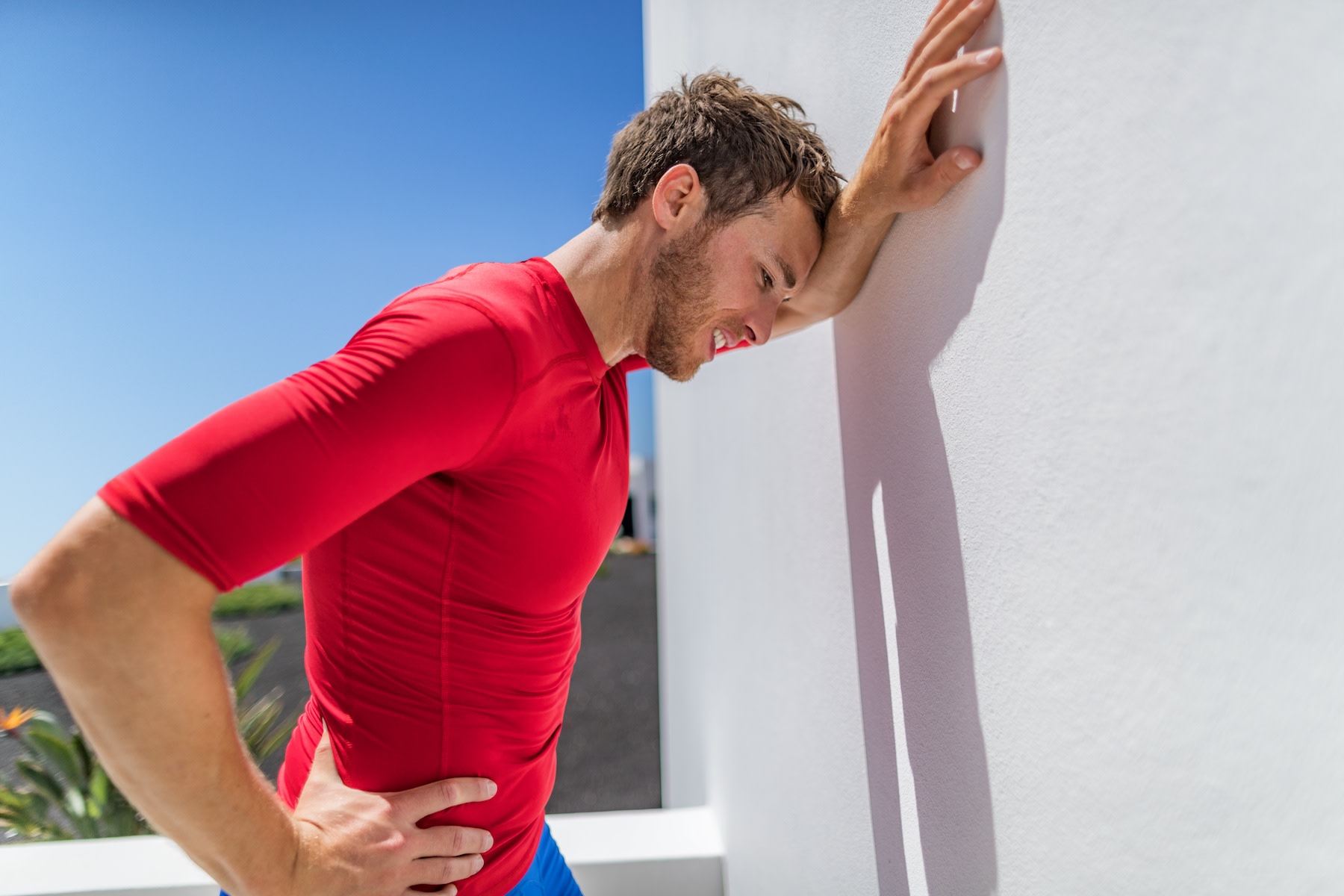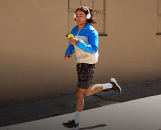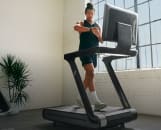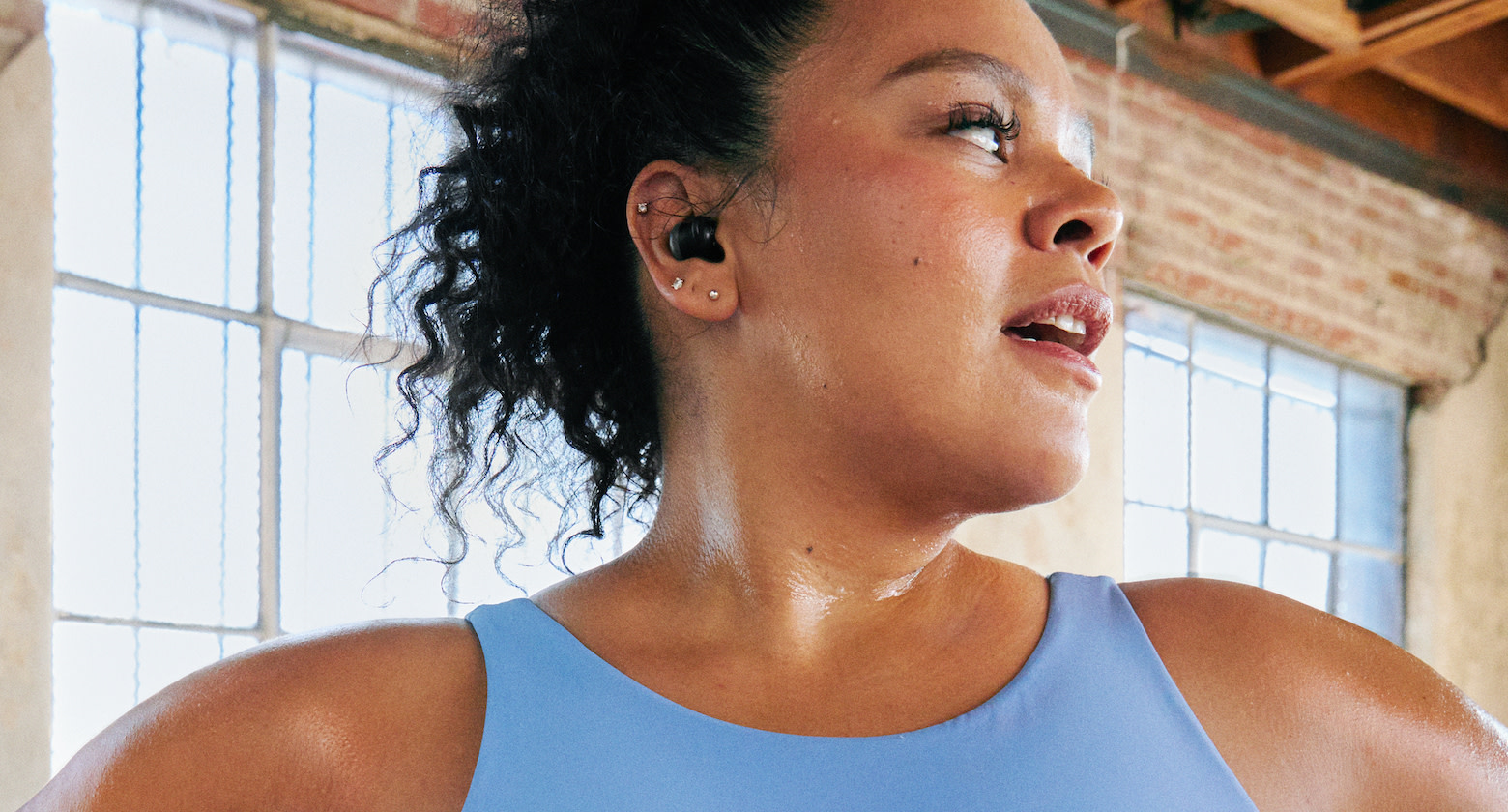
Maridav / iStock / Getty Images Plus via Getty Images
Wondering Why Your Face Gets So Red When You Work Out? Dermatologists Explain What's Going On
Here’s why your face may flush with exercise—and what you can do to treat it.
By Kylie Gilbert•
Why Does My Face Get So Red When I Run or Work Out?
How Long Do Faces Normally Stay Red After a Workout?
Tips for Treating a Red Face After a Workout
Can You Prevent a Red Face During Exercise?
The Takeaway
Consistency is key to reaping the long-term health benefits and fitness gains that come with exercise. But even one cardio session can bring immediate gratification in the form of a better mood and boosted brainpower—and skin that rivals a post-facial glow. For some, though, that post-workout flush can manifest as an unwelcome beet-red face. But why do some of our faces get so red after a run, ride, or tough training session while others don’t seem to be affected?
We spoke with dermatologists to break down the science behind the phenomenon—and what you can do about it.
Why Does My Face Get So Red When I Run or Work Out?
Facial redness—or the tendency to flush with exercise—is your body’s natural way of cooling you down.
“Facial redness is caused primarily by blood vessels in the face,” says board-certified dermatologist Joshua Zeichner, MD, an associate professor of dermatology and the director of cosmetic and clinical research in dermatology at The Mount Sinai Hospital in New York City. In an attempt to prevent our bodies from overheating, our blood vessels dilate, allowing more blood to flow close to the skin, he explains. As a result, “your face appears red because of the color of the red blood cells themselves,” Dr. Zeichner says.
“This isn't a bad thing—in fact, it’s a protective response because it allows more blood to flow to our muscles, which aids in tissue repair and recovery,” says Jennifer Chwalek, MD, a board-certified dermatologist in New York City.
However, some people are more susceptible to post-exercise redness than others based on their skin and workout routine. Facial redness can be caused by a “combination of factors, including genetics, our skin type, the type and intensity of the exercise, and the environment in which we are exercising,” Dr. Chwalek says. Let’s break it all down.
Your Genetics Can Make You More Reactive
Why does your face get so red when you run, even while your jogging buddy doesn’t seem affected by the same workout? Your genes may be the cause. “Some people genetically have more reactive blood vessels than others,” Dr. Zeichner explains.
For example, in conditions like rosacea—which affects the skin on the face and often causes frequent flushing or blushing—the blood vessels dilate more than they should, Dr. Zeichner explains. For those with this chronic inflammatory condition, the blood vessels remain dilated for extended periods of time, leading to “persistent background facial redness,” Dr. Zeichner says.
Of course, not all people with facial flushing have rosacea. Still, Dr. Zeichner notes that if you have flushing that’s also accompanied by burning and stinging (or bumps and pus pimples), see a dermatologist for an evaluation.
People with Fair Skin Might Notice Redness More
“In general, fair-skinned individuals are more likely to get noticeably red with exercise because they have less melanin in their skin to disguise it (it being the vasodilation of blood vessels),” Dr. Chwalek explains.
That said, Dr. Chwalek notes that those with darker complexions can still experience a red face after working out, especially if they have rosacea.
The Type of Exercise Can Factor In
Facial redness after a workout is usually a product of the intensity of the exercise, Dr. Chwalek says. Any moderate-intensity exercise will lead to increased blood flow to the skin. Again, that’s your body’s thermoregulatory response at play causing vasodilation (aka the widening of blood vessels) and, consequently, facial redness, she explains.
That said, there are specific types of exercise that can trigger the response more than others. “Hot yoga, or any exercise with lots of inversions (where there is more blood flow to the face) or intense cardio, may cause more redness,” Dr. Chwalek says.
How Long Do Faces Normally Stay Red After a Workout?
Redness after a workout usually lasts anywhere from a few minutes to an hour, Dr. Chwalek says.
The exact timeline will be influenced by your surroundings. If you’re exercising outside and it’s hot and humid, it will take longer for your body to cool down and the flushing to resolve, she says.
Tips for Treating a Red Face After a Workout
Remember, post-exercise redness is usually normal and nothing to be ashamed about. But if you don’t want to wait for the redness to ease up on its own, there are a few things that might help.
Both Dr. Zeichner and Dr. Chwalek recommend a cool compress post-workout as a quick and effective way to treat a red face. Simply head to your bathroom or gym locker room and apply a cold, damp washcloth to the skin.
Then, follow it up with a moisturizer designed to address sensitivity and facial redness, Dr. Zeichner suggests. Many contain soothing botanicals as well as calming ingredients such as licorice, extractor, and niacinamide, he says.
And if you find that over-the-counter products aren’t helping, your dermatologist may be able to prescribe a medication to help with redness, Dr. Chwalek says. Both experts also note that other treatments, such as lasers or even Botox, can also be used to treat rosacea if this is determined to be the cause of your redness. But as always, talk to your dermatologist about what might be best for your skin.
Can You Prevent a Red Face During Exercise?
“It can be difficult to prevent facial flushing, since it is part of your body’s physiological response,” Dr. Zeichner says.
That said, if your skin is particularly sensitive, Dr. Chwalek suggests avoiding hot environments and sticking to air-conditioned spaces if you can. Dr. Zeichner adds that exercising near a fan to stay cool can also help.
If you know you’ll be exercising in a hot environment, dialing down the intensity of the exercise can also help prevent a red face, Dr. Chwalek says.
And if you just aren’t willing to give up your intense hot yoga classes? “Consider using a cool mist spray during exercise,” she suggests.
Consider Adopting a Preventative Diet and Skincare Routine
Lastly, if you’re susceptible to facial redness after exercise and want to try to prevent it, you might consider paying attention to your diet—especially before your workout, Dr. Chwalek says.
Research suggests that cells within our muscles release histamine with intense exercise. Histamine is a vasodilator and causes our blood vessels to open up, which contributes to redness and flushing, Dr. Chwalek explains. As a result, it might help to avoid certain foods or drinks that trigger the release of histamine before exercise, such as alcohol, fermented foods, avocados, eggplant, chocolate, processed meats, and dairy products, she says. And while you may be tempted to reach for an energy drink before a workout, she suggests avoiding them because they can block the enzyme that metabolizes histamine.
Dr. Zeichner also notes that a good skincare routine is key. Redness and irritation can be signs of a compromised skin barrier, which keeps moisture in and protects against external threats like chemicals and allergens. “Make sure to keep the skin barrier in as good shape as possible with moisturizer that contains skin-protecting ingredients like ceramides, colloidal oatmeal, and hyaluronic acid,” he says.
The Takeaway
If you’re someone who deals with persistent (rather than temporary) redness, it’s a good idea to see your dermatologist to rule out a skin condition like rosacea. But most of the time, a red face after exercise—especially after an all-out cardio session—is just our body doing its job to cool you down and is typically nothing to worry about. But if post-workout facial redness bothers you, dialing down the heat or exercise intensity can help, as can using a cold compress and a skin-soothing moisturizer after you’re done.

Peloton App
Access thousands of classes with no equipment needed.
This content is for informational and educational purposes only and does not constitute individualized advice. It is not intended to replace professional medical evaluation, diagnosis, or treatment. Seek the advice of your physician for questions you may have regarding your health or a medical condition. If you are having a medical emergency, call your physician or 911 immediately.
This content is for informational and educational purposes only and does not constitute individualized advice. It is not intended to replace professional medical evaluation, diagnosis, or treatment. Seek the advice of your physician for questions you may have regarding your health or a medical condition. If you are having a medical emergency, call your physician or 911 immediately.
Get our latest health stories straight to your inbox
Enter your email to get articles, expert-backed tips, and updates from Peloton sent to your inbox.
By providing your email address, you agree to receive marketing communications from Peloton.
For more about how we use your information, see our Privacy Policy.






